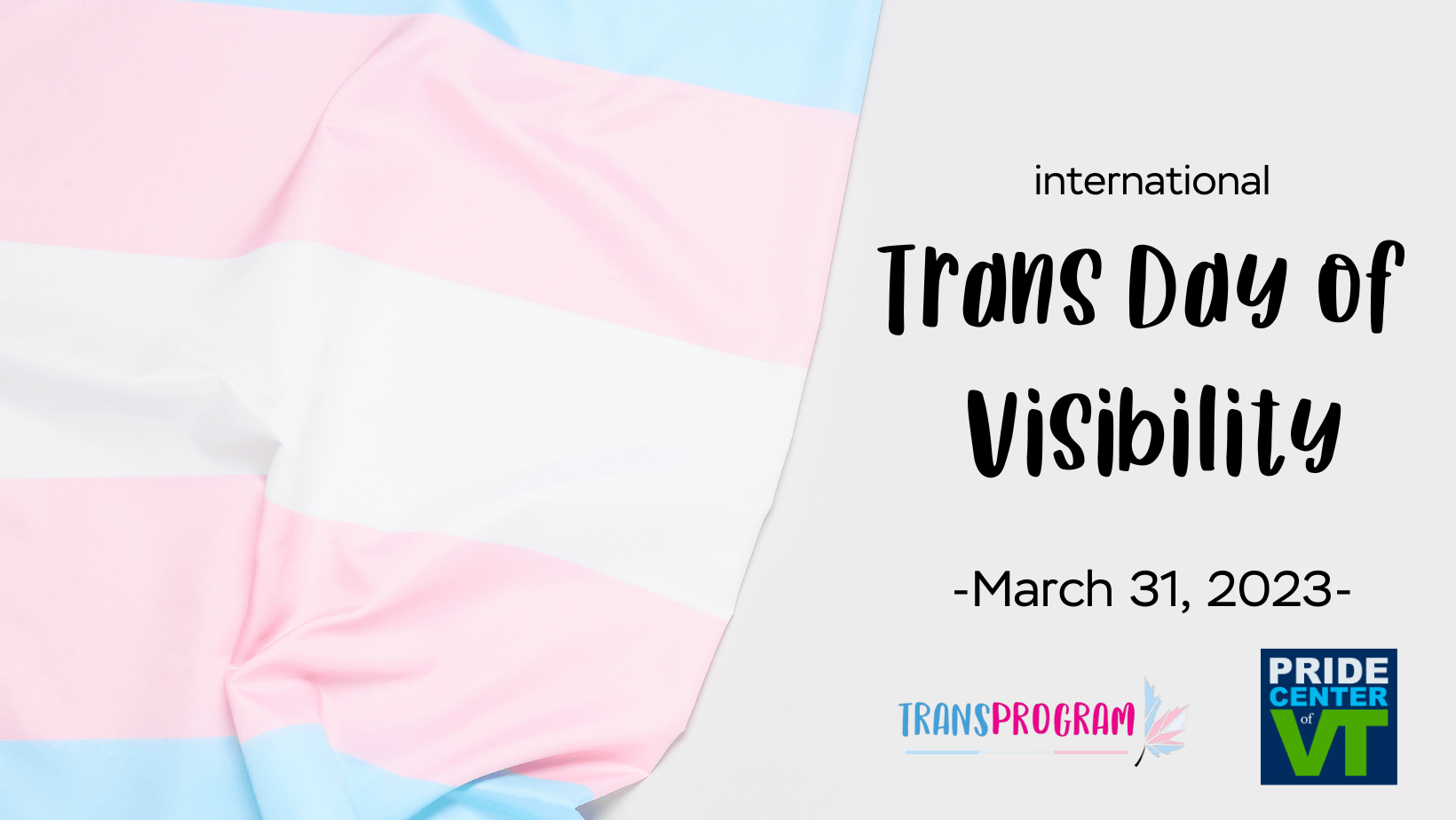Becoming A Stronger Ally: Your Guide For International Transgender Day Of Visibility

Table of Contents
International Transgender Day of Visibility (ITDoV) is an important opportunity to celebrate transgender people and raise awareness about the challenges they face. This guide offers practical steps to become a more informed and effective ally, promoting understanding and respect within your community. We'll explore key areas where you can make a difference and contribute to a more inclusive world.
Understanding Transgender Identities and Experiences
Defining Gender Identity and Expression:
Understanding the nuances of gender identity is crucial to being a strong ally. Sex assigned at birth refers to the sex assigned to an individual at birth based on visible biological sex characteristics. Gender identity, however, is an individual's internal sense of being a man, woman, both, neither, or somewhere else along the gender spectrum. Gender expression refers to how someone outwardly presents their gender through clothing, behavior, and other means. It's important to remember that gender identity, gender expression, and sex assigned at birth are distinct and not always aligned. Someone might be cisgender, meaning their gender identity aligns with their sex assigned at birth, or transgender, meaning their gender identity differs from their sex assigned at birth.
- The transgender community is incredibly diverse; there is no single “transgender experience.” Individuals may identify as trans men, trans women, non-binary, genderqueer, agender, and many other identities.
- Never assume someone's gender identity based on their appearance. Respect their self-identified gender.
- Misgendering (using incorrect pronouns or names) and deadnaming (using a person's birth name when they have chosen a different name) are incredibly hurtful and invalidate a transgender person's identity.
- For further information on transgender terminology and identities, explore resources like GLAAD's website and The Trevor Project.
Educating Yourself and Challenging Transphobia
Recognizing and Combating Transphobic Language and Behavior:
Transphobia, the fear and prejudice against transgender people, manifests in various forms, from overt acts of violence to subtle microaggressions. These microaggressions, seemingly small acts of discrimination, can cumulatively have a significant negative impact. Harmful stereotypes and misinformation often fuel transphobic attitudes.
- Examples of transphobic language include using incorrect pronouns, deadnaming, making jokes about transgender people, or questioning someone's gender identity. Transphobic actions can range from verbal harassment to physical violence and discrimination in employment, healthcare, and housing.
- If you witness transphobic behavior, speak up! This can be as simple as politely correcting someone who misgenders another person or directly challenging transphobic statements. Your intervention, however small, can make a difference.
- Engage in active listening when transgender individuals share their experiences. Learn from their perspectives and avoid interrupting or dismissing their feelings.
- Expand your understanding of trans issues through books (like Transgender 101 by Nicholas Teich), articles from reputable sources (like the Human Rights Campaign), and documentaries (like Disclosure).
Advocating for Transgender Rights and Inclusion
Supporting Transgender-Inclusive Policies and Legislation:
Advocating for transgender rights is crucial to creating a more equitable society. This involves supporting legislation that protects transgender individuals from discrimination and ensures access to healthcare, education, and other essential services.
- Contact your elected officials to express your support for transgender-affirming legislation. Many organizations provide tools and resources to simplify this process.
- Participate in peaceful protests and rallies advocating for transgender rights. Your presence demonstrates your commitment to the cause.
- Support organizations fighting for transgender rights, such as the National Center for Transgender Equality and similar local groups. Donate your time or resources to these crucial organizations.
- Vote for candidates who demonstrably support transgender equality and have a proven track record of advocating for LGBTQ+ rights. This is a vital step in creating systemic change.
Creating Inclusive Environments in Your Daily Life
Using Inclusive Language and Pronouns:
Using inclusive language is a fundamental aspect of allyship. This involves correctly using someone's pronouns and avoiding gendered assumptions.
- Always ask for someone's pronouns. It's respectful and shows that you value their identity. Don't assume their pronouns based on their appearance.
- Correctly using someone's pronouns is crucial. If you make a mistake, apologize sincerely and correct yourself. Consistency is key.
- Use gender-neutral language when possible (e.g., "chairperson" instead of "chairman"). This shows your commitment to inclusivity.
- Correct others when they misgender someone. Politely but firmly let them know the correct pronouns and gender identity.
Supporting Transgender Individuals in Your Community
Finding Local Resources and Support Groups:
Connecting transgender individuals with local resources and support groups is vital for their well-being. These resources can offer invaluable support, information, and community.
- Many national and local LGBTQ+ organizations provide support, resources, and referrals for transgender individuals. Research organizations in your area.
- Building allyship within your communities is essential. Talk to your friends, family, and colleagues about transgender issues to promote understanding and acceptance.
- Transgender individuals often face significant mental health challenges, including higher rates of depression, anxiety, and suicide attempts. Offer your support and encourage them to seek professional help.
- Offer practical support, such as helping someone access healthcare, legal services, or other necessary resources. These small actions can make a big difference.
Conclusion:
Becoming a stronger ally is a continuous journey of learning, listening, and acting. By understanding transgender identities, challenging transphobia, advocating for rights, and creating inclusive environments, you can make a significant difference in the lives of transgender individuals. This International Transgender Day of Visibility, commit to ongoing education and action.
This International Transgender Day of Visibility, let's all strive to become better allies. Learn more about transgender issues, challenge discrimination, and actively participate in creating a more inclusive and equitable world for transgender people. Continue your journey towards becoming a stronger ally.

Featured Posts
-
 Chinas Steel Curbs Trigger Iron Ore Price Decline A Market Overview
May 10, 2025
Chinas Steel Curbs Trigger Iron Ore Price Decline A Market Overview
May 10, 2025 -
 Understanding Trumps Transgender Military Ban Separating Fact From Fiction
May 10, 2025
Understanding Trumps Transgender Military Ban Separating Fact From Fiction
May 10, 2025 -
 Pope Leo Addresses Growing De Facto Atheism In Inaugural Mass
May 10, 2025
Pope Leo Addresses Growing De Facto Atheism In Inaugural Mass
May 10, 2025 -
 Unraveling The Mystery 5 Leading Theories On Who David Is In High Potential He Morgan Brother
May 10, 2025
Unraveling The Mystery 5 Leading Theories On Who David Is In High Potential He Morgan Brother
May 10, 2025 -
 Blue Origin Flight Young Thug Not Among Passengers
May 10, 2025
Blue Origin Flight Young Thug Not Among Passengers
May 10, 2025
